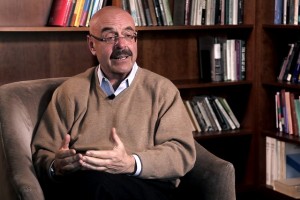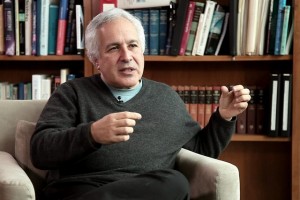The Science of Laughter
Neuroscientist Sophie Scott on contagion effects in laughter, conduct disorder, and the tribes of Namibia
In the early days of social cognition people used essentially the same paradigms that they used in traditional experimental psychology. This basically means taking your volunteer, putting them in a small room by themselves, and telling them to do things like pressing a button every time the night comes on. This was taken over into social cognition. So you take your volunteer, you put them in a small room, and you tell him to press a button every time they see a fearful face or something like that. It became apparent to many of us that this was actually missing out most of social cognition, because in real life we’re not sitting the room all by ourselves – we’re interacting like me talking to you in this interview. At the moment and we needed new paradigms so that we could actually study people interacting in real time in the lab.
The reason that two heads are better than one in that situation is that in a task like this, when you constantly have fluctuations in your attention – sometimes you were not working closely enough. But this is unlikely to happen to both people at the same time, so they can find out on each trial, which one was attending more, which one is more confident in their answer. You take that answer, you get a better result.
There are all sorts of exciting things happen, when we started studying interacting minds. We’re at a very early stage yet, but we have discovered quite a few interesting features of interacting minds, like the mutual adaptation, which seems to be critical at all sorts of levels of cooperation, the recursion, which seems to be important when we’re in competitive situations. I think this is a vital importance, if we really want to understand how human interactions work in real life, in society, in politics and, of course, in the end – interactions between nations.

Neuroscientist Sophie Scott on contagion effects in laughter, conduct disorder, and the tribes of Namibia

Psychologist Christopher Winship on the causal effects of schooling, similarities between athletics and intell...

Neurobiologist Jeff Lichtman on brain cell connections, Golgi stain, and big data in neurophysiology